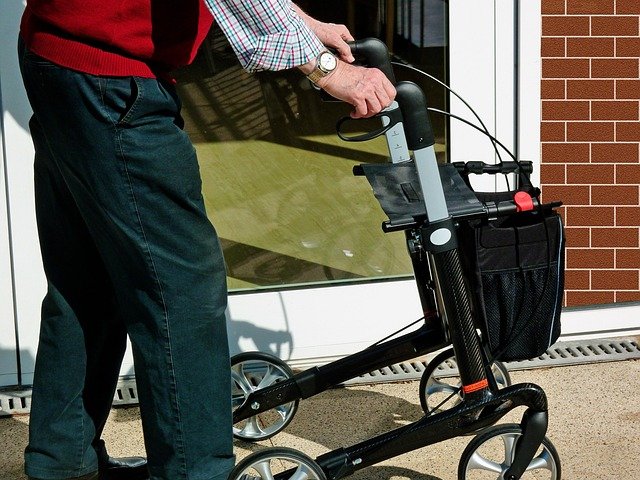Finding the Perfect 1 Bedroom Senior Apartment for You
Finding the ideal one-bedroom senior apartment can feel overwhelming, but with the right approach, it can be a seamless process. Taking the time to understand your needs, preferences, and budget is crucial in making an informed choice. Consider what features and amenities are most important to you and how the location will impact your lifestyle. Whether you desire proximity to family, medical facilities, or entertainment, each factor plays a significant role in your decision.

Selecting a 1 bedroom apartment during your senior years represents a significant life transition that requires thoughtful planning and research. The right living space can enhance your quality of life, provide necessary support services, and offer opportunities for social engagement while maintaining your independence.
What to Look for in a 1-Bedroom Apartment
When evaluating potential apartments, prioritize accessibility features such as grab bars in bathrooms, wheelchair-accessible doorways, and emergency call systems. Consider the layout carefully - open floor plans often work better for mobility aids, while adequate storage helps accommodate a lifetime of belongings. Natural lighting, air conditioning, and updated appliances contribute to daily comfort and energy efficiency.
Location matters significantly for seniors. Proximity to healthcare facilities, grocery stores, pharmacies, and public transportation reduces dependency on others for essential services. Ground-floor units or buildings with reliable elevators eliminate stair-climbing challenges. Parking availability, whether covered or uncovered, affects your ability to maintain vehicle independence.
Finding Apartments Through Online Resources
Several specialized websites cater to senior housing searches. Apartments.com offers detailed filters for senior-friendly features, while SeniorHousingNet.com focuses exclusively on age-restricted communities. A Place for Mom provides comprehensive listings with professional guidance, and HUD.gov lists government-subsidized options for qualifying seniors.
Local housing authorities maintain websites with current availability for income-based apartments. Many property management companies also maintain online portals showcasing their senior-focused properties with virtual tours, amenity lists, and application processes.
Exploring Housing Options by Location
Urban areas typically offer more apartment choices but at higher costs. Suburban locations often provide better value while maintaining access to services. Rural areas may have limited options but can offer peaceful environments and lower living costs.
States like Florida, Arizona, and North Carolina have developed extensive senior housing markets with competitive pricing. Northern states may have fewer options but often include heating assistance programs. Research local senior services, as some areas provide transportation, meal programs, and social activities that enhance apartment living.
Selecting the Right Community Environment
Age-restricted communities (55+ or 62+) offer peer interaction and often include amenities like fitness centers, libraries, and organized activities. Mixed-age communities provide intergenerational interaction but may lack senior-specific programming.
Evaluate the community’s social atmosphere during visits. Active communities with regular events, clubs, and volunteer opportunities combat isolation. Consider the management company’s reputation for maintenance responsiveness and tenant relations, as these factors significantly impact daily living satisfaction.
Understanding Low-Income Housing Qualifications
Section 8 Housing Choice Vouchers help eligible seniors afford market-rate apartments by subsidizing rent payments. Qualification depends on income limits, typically 50% or less of the area median income. Public housing developments specifically for seniors often have long waiting lists but offer affordable rent based on income.
Low-Income Housing Tax Credit (LIHTC) properties reserve units for seniors meeting income requirements, usually 60% of area median income or below. USDA Rural Development programs assist seniors in qualifying rural areas. Veterans may access additional housing assistance through VA programs.
| Housing Type | Average Monthly Cost | Income Requirements | Key Features |
|---|---|---|---|
| Independent Living Community | $1,500 - $3,500 | Varies by location | Amenities, social activities, maintenance included |
| Market Rate Apartment | $800 - $2,200 | 3x rent in monthly income | Standard apartment features, no age restrictions |
| Section 8 Subsidized | $300 - $800 (tenant portion) | 50% or less of area median income | Rent based on 30% of income |
| Senior Public Housing | $200 - $600 | 80% or less of area median income | Age-restricted, income-based rent |
| LIHTC Property | $600 - $1,400 | 60% or less of area median income | Mixed-income community, rent restrictions |
Prices, rates, or cost estimates mentioned in this article are based on the latest available information but may change over time. Independent research is advised before making financial decisions.
Successful apartment hunting requires patience and thorough research. Start your search several months before your desired move-in date, especially for subsidized housing with waiting lists. Visit multiple properties, ask detailed questions about policies and fees, and read lease agreements carefully. Consider hiring a senior housing specialist if the process feels overwhelming - many work at no cost to you while helping navigate available options and application processes.




